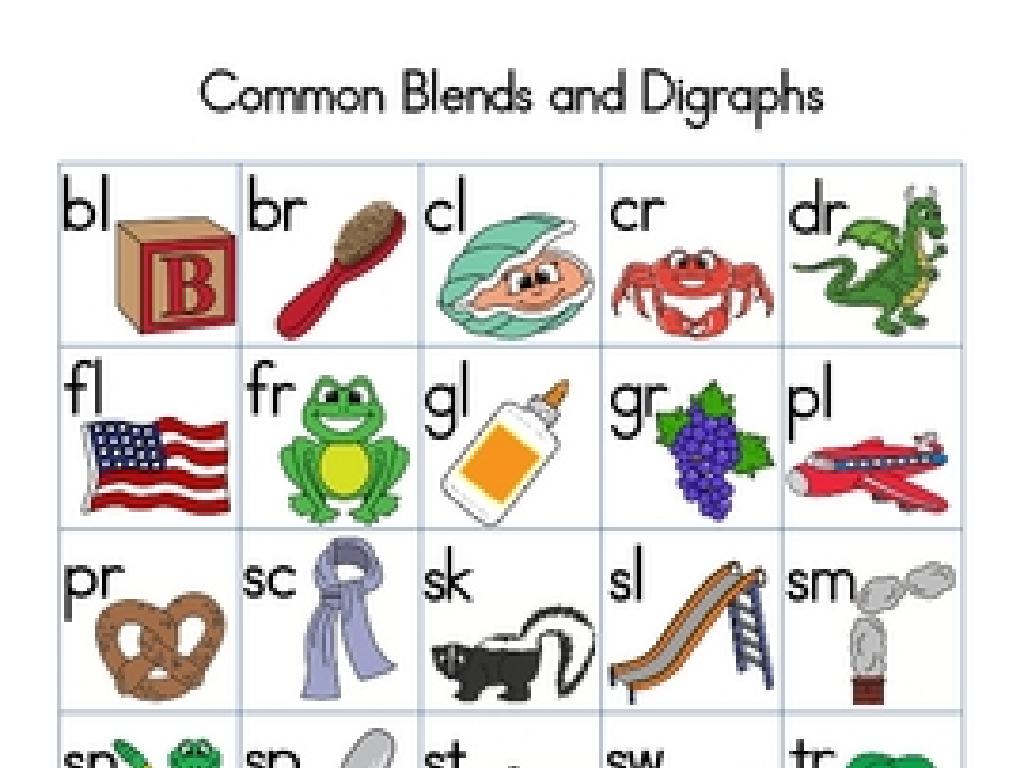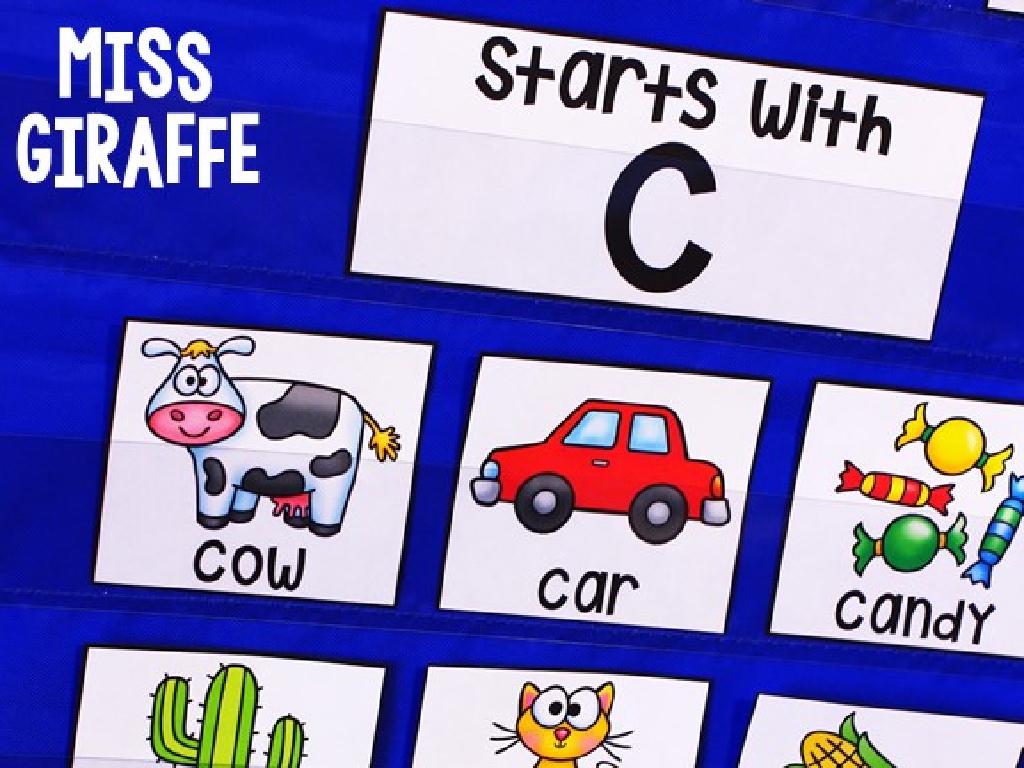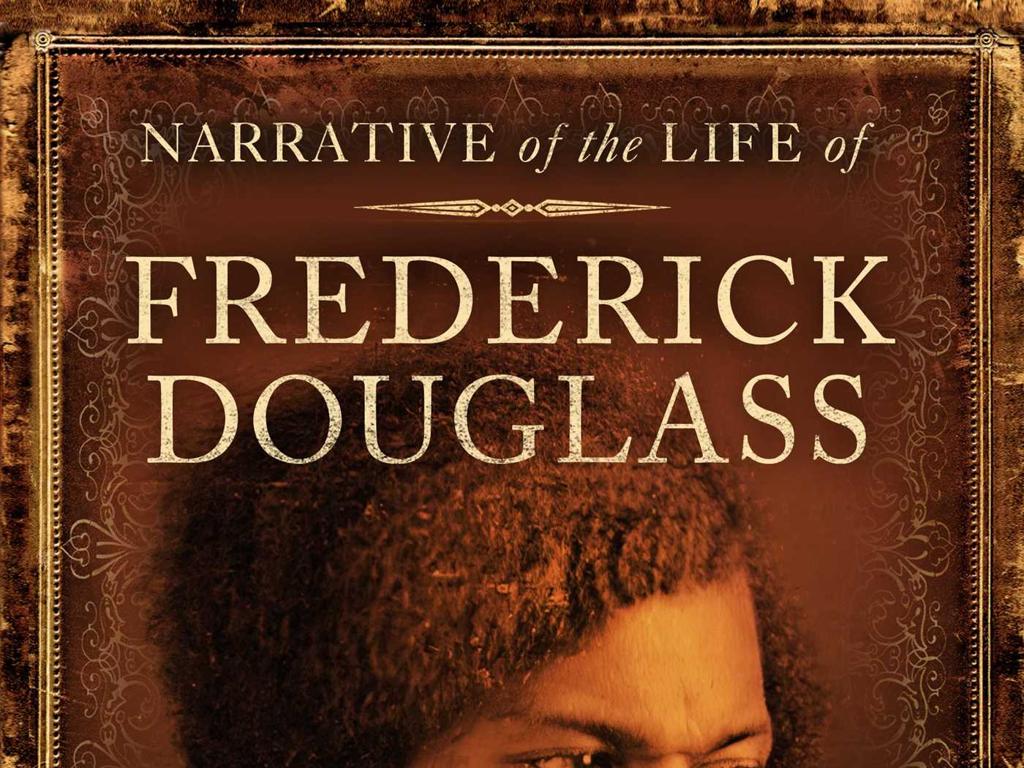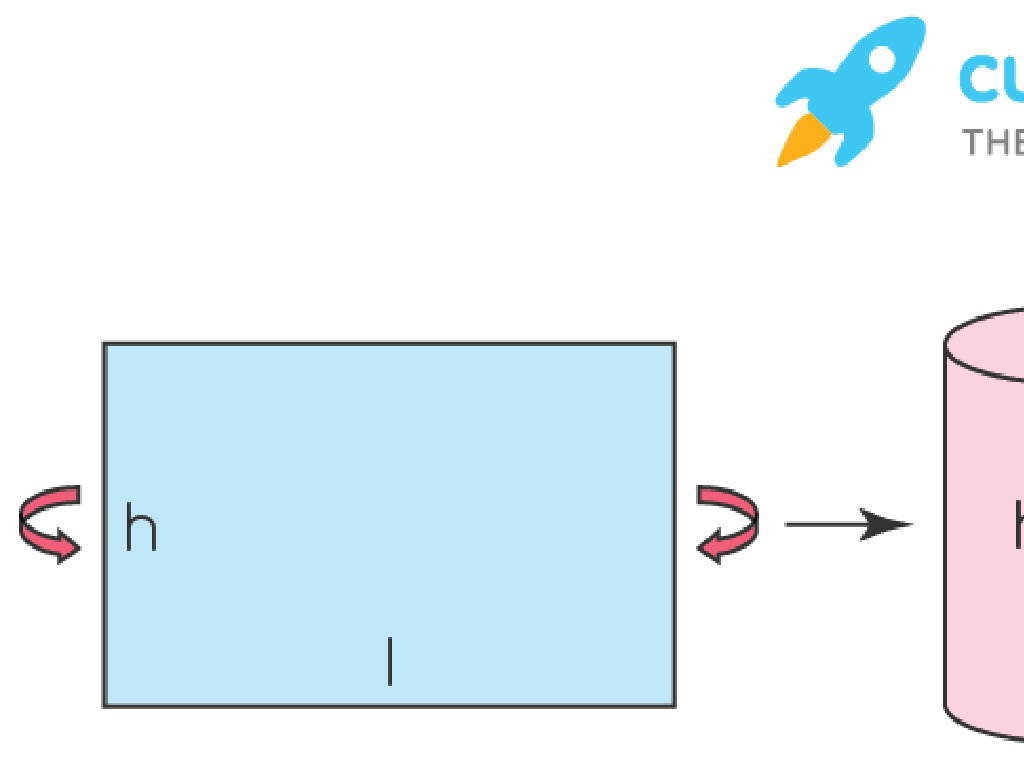Use Relative Pronouns: Who, Whom, Whose, Which, And That
Subject: Language arts
Grade: Eighth grade
Topic: Pronoun Types
Please LOG IN to download the presentation. Access is available to registered users only.
View More Content
Understanding Relative Pronouns
– Define relative pronouns
– Words that relate to nouns/pronouns to give more info
– ‘Who’ and ‘whom’ usage
– ‘Who’ for subjects, ‘whom’ for objects (e.g., Who is calling? To whom did you speak?)
– ‘Whose’, ‘which’, and ‘that’
– ‘Whose’ shows possession, ‘which’ for things, ‘that’ for people/things
– Practice with examples
|
This slide introduces the concept of relative pronouns, which are used to connect clauses and provide additional information about the subject. ‘Who’ is used for subjects performing an action, while ‘whom’ is for individuals receiving an action. ‘Whose’ indicates possession, ‘which’ is used for non-living things or animals, and ‘that’ can refer to both people and things. Provide clear examples for each to solidify understanding. Encourage students to create sentences using each relative pronoun to practice their new skills.
Understanding Relative Pronouns
– Pronouns: A Quick Review
– Pronouns are words used instead of nouns.
– Pronouns Replace Nouns
– They prevent repetition, e.g., ‘Sam’ to ‘he’, ‘the team’ to ‘they’.
– Types: Subjective, Objective, Possessive
– Subjective: he, she; Objective: him, her; Possessive: his, hers.
– Focus: Who, Whom, Whose, Which, That
– Relative pronouns link clauses to nouns or pronouns.
|
Begin with a quick review of what pronouns are and their function in replacing nouns to avoid repetition. Provide examples of common pronouns such as ‘he’, ‘she’, ‘it’, ‘they’, and ‘you’. Explain the different types of pronouns: subjective (he, she), objective (him, her), and possessive (his, hers). Then, introduce the relative pronouns ‘who’, ‘whom’, ‘whose’, ‘which’, and ‘that’, which are used to link clauses to nouns or pronouns, providing more information about them. Use examples to illustrate how each relative pronoun is used in a sentence. This will set the stage for more in-depth exploration of relative pronouns in subsequent slides.
Introducing Relative Pronouns
– Relative pronouns connect clauses
– ‘Who’, ‘whom’, ‘whose’, ‘which’, ‘that’ link sentences to nouns/pronouns
– They introduce relative clauses
– A relative clause gives more information about the noun
– Examples in sentences
– ‘The teacher, who loves books, reads daily.’
– Usage in complex sentences
– Enhance descriptions and provide clarity
|
This slide introduces the concept of relative pronouns, which are essential tools in English for connecting clauses and providing additional information about a noun or pronoun. Emphasize the importance of relative pronouns in constructing complex sentences that are rich in detail. Provide examples to illustrate how relative pronouns are used in sentences to introduce relative clauses, which act as adjectives to describe nouns. Encourage students to identify relative pronouns in texts they read and to practice using them in their writing to add depth to their descriptions.
Understanding the Pronoun ‘Who’
– ‘Who’ refers to clause’s subject
– Use ‘who’ for people, not things, in the subject position, like ‘The teacher who loves to read.’
– Example: Artist who painted
– ‘The artist who painted this is famous’ shows ‘who’ describes the artist.
– Activity: Find ‘who’ in sentences
– Look at sentences and spot ‘who’ referring to the subject.
|
This slide introduces the relative pronoun ‘who,’ which is used to refer to the subject of a clause and is typically used when talking about people. Provide students with examples of ‘who’ in sentences and explain that it connects additional information to the subject. For the activity, present sentences where students must identify the pronoun ‘who’ and the subject it refers to. This will help them understand how ‘who’ is used in context. Possible sentences for the activity could include: ‘The author who writes mystery novels is coming to town.’, ‘The teacher who gave us homework is absent today.’, ‘The actor who won the award is in a new movie.’, ‘The scientist who discovered the cure is very young.’
Mastering the Pronoun ‘Whom’
– ‘Whom’ as a clause object
– ‘Whom’ is used for the object in sentences, not the subject.
– Example: Question format
– ‘To whom did you give the book?’ shows ‘whom’ as the receiver of the action.
– Activity: Crafting questions
– Create questions using ‘whom’ to ask about the object of an action.
– Understanding ‘whom’ usage
|
This slide focuses on the pronoun ‘whom,’ which is often used incorrectly. Emphasize that ‘whom’ is the object form of ‘who’ and is used to refer to the receiver of an action in a sentence. Provide the example ‘To whom did you give the book?’ to illustrate its use in questions. For the activity, students will practice forming questions with ‘whom’ to reinforce their understanding. Encourage them to think of ‘whom’ as answering ‘to or for whom?’ or ‘by whom?’ This will help clarify its role as an object. The activity will involve students creating their own sentences using ‘whom’ to ask about the object of an action, which will be shared with the class for further discussion.
Understanding ‘Whose’ in Relative Pronouns
– ‘Whose’ shows possession
– Example: ‘Whose book is that?’
– Indicates ownership, e.g., ‘Whose dog barked loudly?’
– Activity: Crafting ‘whose’ sentences
– Create sentences with ‘whose’ to show ownership
– Enhance descriptive skills
|
The pronoun ‘whose’ is used to indicate possession and is an important part of understanding relative pronouns. Start by explaining the concept of possession in grammar. Use clear examples to illustrate how ‘whose’ can be used in questions to inquire about ownership. For the activity, encourage students to think of items or people around them and create sentences using ‘whose’. This exercise will help them understand the use of ‘whose’ in various contexts and enhance their descriptive language skills. As a teacher, be prepared to provide guidance and additional examples if students struggle with this concept. Offer feedback on their sentences to ensure they grasp how ‘whose’ functions within a sentence.
Understanding the Pronoun ‘Which’
– ‘Which’ refers to objects/animals
– Use ‘which’ for non-human nouns, e.g., ‘Which book is yours?’
– Example: Choosing a route
– ‘Which route should we take?’ implies selecting one of many paths.
– Activity: Select the correct ‘which’
– Given sentences, pick where ‘which’ fits contextually.
|
This slide focuses on the relative pronoun ‘which,’ typically used to refer to things or animals. Start by explaining the use of ‘which’ in differentiating among a group of non-human nouns. Provide clear examples, such as choosing between routes, to illustrate its usage. The class activity involves students identifying the correct use of ‘which’ in various sentences. This exercise will help reinforce their understanding of ‘which’ as a relative pronoun. For the activity, prepare sentences with multiple choice options where ‘which’ is used correctly and incorrectly, allowing students to choose the right option. Encourage students to explain why they chose a particular answer to ensure comprehension.
Understanding the Pronoun ‘That’
– ‘That’ refers to people, things, animals
– Use ‘that’ for persons or objects in a sentence
– Example: Book you need is on the table
– ‘That’ connects the book to needing it
– Activity: Find ‘that’ in sentences
– Identify sentences using ‘that’ and its role
|
This slide focuses on the relative pronoun ‘that’, which is versatile and can refer to people, objects, or animals. It is used to connect a clause to a noun or pronoun in a sentence, providing more information about it. For example, in ‘The book that you need is on the table,’ ‘that’ connects the subject ‘book’ with the information that someone needs it. The activity encourages students to identify the use of ‘that’ in various sentences, enhancing their understanding of its function. Teachers should prepare sentences with and without ‘that’ to compare and discuss the difference in clarity and meaning. This exercise will help students recognize the importance of ‘that’ in providing specific details in a sentence.
Let’s Practice Relative Pronouns!
– Combine sentences with relative pronouns
– Use ‘who’ for people, ‘which’ for things, ‘that’ for either
– Spot and fix relative pronoun errors
– Find sentences with pronoun mistakes to correct
– Craft sentences using relative pronouns
– Create original examples with each type of pronoun
– Understand ‘who’, ‘whom’, ‘whose’, ‘which’, ‘that’
|
This slide is designed for an interactive class activity on relative pronouns. Students will practice combining sentences using ‘who’, ‘whom’, ‘whose’, ‘which’, and ‘that’. They will also learn to identify and correct improper uses of these pronouns in sentences. Encourage students to create their own sentences, applying each relative pronoun to ensure they grasp their usage in different contexts. For the teacher: Prepare sentence strips for the combination exercise, a worksheet with errors for correction, and a creative sentence-forming activity. Possible variations include group work, peer review, or creating a story using all the relative pronouns.
Class Activity: Relative Pronoun Hunt
– Pair up and find relative pronouns in books
– Write down sentences with pronouns
– Look for ‘who’, ‘whom’, ‘whose’, ‘which’, ‘that’
– Identify the relative pronoun used
– Share findings with the class
|
This activity is designed to reinforce the students’ understanding of relative pronouns through practical application. Have the students work in pairs to encourage collaboration. They should look for sentences containing the relative pronouns ‘who’, ‘whom’, ‘whose’, ‘which’, and ‘that’. Once they find these sentences, they should write them down along with the pronoun used and discuss why it was used in that context. Afterward, each pair will share their sentences and explain their findings to the class, fostering a collaborative learning environment. Possible variations of the activity could include finding pronouns in different genres of writing, creating their own sentences using relative pronouns, or even writing a short paragraph that includes all five types of relative pronouns.
Wrapping Up: Relative Pronouns & Homework
– Recap: Why relative pronouns matter
– Homework: Craft a short story
– Use who, whom, whose, which, and that in your story
– Include all relative pronouns
– Study for the upcoming pronoun quiz
– Review pronoun types for the quiz
|
As we conclude today’s lesson, remind students of the key role relative pronouns play in connecting sentences and providing additional information without starting a new sentence. For homework, students should write a creative short story that incorporates each of the relative pronouns discussed: who, whom, whose, which, and that. This will help reinforce their understanding through practical application. Additionally, inform students that there will be a quiz on pronouns in the next class, so they should review their notes and ensure they can identify and use different types of pronouns correctly. Offer some study tips, like creating flashcards or forming study groups, to prepare for the quiz.






